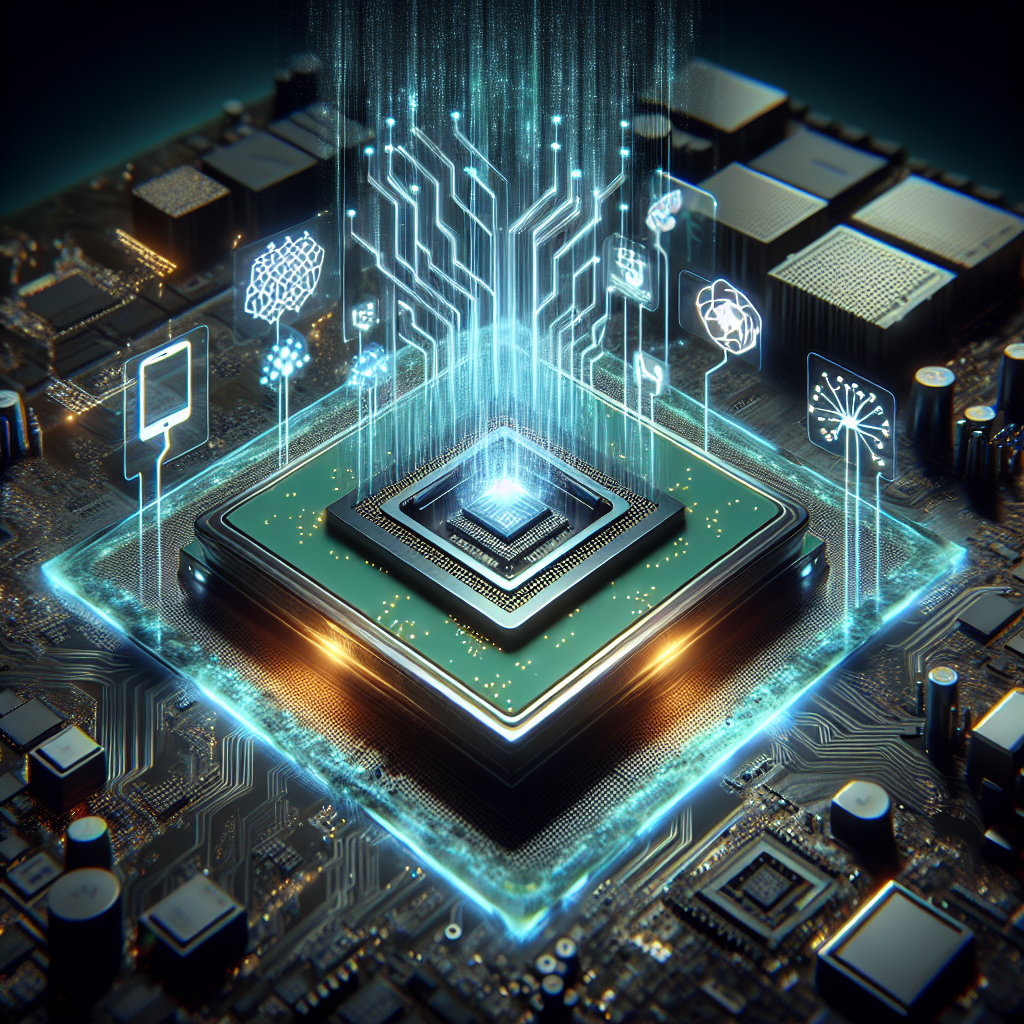AMD's Hail Mary in AI and Mobile Computing: A Revolution or a Calculated Gambit?
The tech colosseum has been buzzing with an electrifying anticipation, as AMD stepped into the spotlight, heralding the arrival of their latest innovations in the realm of artificial intelligence and mobile computing. Their latest "Advancing AI" presentation was more than just a showcase; it was a statement, a strategic play that could redefine the gaming board for the years to come. The crux of the event? The thunderous revelation of Hawk Point and Strix APU information that left tech enthusiasts and market analysts reeling.
During the presentation, suspicions were confirmed and exceeded as AMD unveiled their arsenal, which didn't just promise an evolution but rather a revolution in efficiency and performance. Let's peel back the layers of this technological onion and see whether AMD's deliverance is the herald of a new era or a gambit against an industry goliath.
The Meteor Lake Conundrum: Intel's Stumbling Giant
Before delving into AMD's chest-pounding announcements, one cannot ignore the looming silhouette of Intel's Meteor Lake. The industry murmurs and leaks have painted a not-so-flattering picture of the project that was supposed to propel Intel into the stratosphere. Rumblings from within Intel's walls suggest that Meteor Lake's performance might not just be on par with its predecessor, Raptor Lake, but also that its efficiency and AI performance might not quite eclipse AMD’s Phoenix chip.
As whispers turn into discussions, and discussions into debates, it becomes evident that if Meteor Lake’s raison d'être is efficiency, then achieving anything less than a groundbreaking improvement would be seen as a stumble rather than a stride for Intel.
AMD's Hawk Point: A Preemptive Strike
In a move as audacious as it is shrewd, AMD announced the shipment of Hawk Point ahead of Intel's official launch of Meteor Lake. The timing, as much as the technology itself, seems to be an arrow aimed directly at Intel's confidence. It's a statement that AMD doesn't just smell blood in the water – they're ready to cause the wound themselves.
One could speculate that this deliberate timing is designed to set the narrative in AMD's favor, ensuring that whatever numbers Intel brandishes for Meteor Lake's AI performance, they pale in comparison to AMD's already circulating figures.
The Apex of AI Performance: AMD Plays Its Hand
The stage was set, and AMD didn't hold back. Their claims of a robust 16 TOPS (trillion operations per second) for AI performance positioned them firmly ahead of Meteor Lake's alleged 10 TOPS. AMD's bold declaration, buoyed by Microsoft's vocal need for more TOPS, paints a picture of an AI powerhouse ready to deliver on the ever-growing demands of machine learning and computational problem-solving.
The Dragon's Hoard: AMD's Multithreaded Muscle
AMD’s multi-threading capabilities have not been left in the shadows either. While Intel's Meteor Lake might not be breaking any records against its kin, Raptor Lake, AMD is prepared to flaunt a superior multi-threading performance that could tip the scales in their favor.
Integrated Graphics: The Silent Assassin
AMD's strategy doesn't stop with raw computational power. The integrated graphics performance of Hawk Point is a cloaked dagger aimed at the heart of Intel's iGPU, potentially outperforming it and leaving Meteor Lake to contend with a competitor that is not only equal but might surpass it in the gaming arena.
The Masterstroke: AMD’s Strix Point Awaits
While Hawk Point is set to dance with Meteor Lake, it is the specter of Strix Point that looms large. Touted as the true successor that will usher in a monumental leap in premium laptop experiences, Strix Point stands as a testament to AMD's ambition and vision for the future – a future that Intel might not have a ready answer for until 2025.
The Mi 300X: AMD's Dark Horse in HPC
As this high-stakes game unfolds, AMD's trump card might just be the Mi 300X. Designed to compete in the cutthroat high-performance computing (HPC) market, AMD's Mi 300X represents not only a competitive alternative to Nvidia's Hopper but a testament to AMD's commitment to advancing the frontiers of computational excellence.
The Strategy Unfolds
With AMD's announcements, the tech world witnesses a strategic masterclass. The timing, the technology, and the tantalizing promises of what's to come position AMD not just as a competitor, but as a visionary lead in an industry that thrives on innovation.
As the dust settles on AMD's Advancing AI presentation, one thing is certain: AMD is not just playing the game; they're redefining it. With a lineup that promises to carve a path through benchmarks and expectations alike, AMD's latest chapter could very well be the catalyst for a seismic shift in the technological landscape. And as for Intel, the gauntlet has been thrown. Will they rise to the challenge, or find themselves outpaced in a race they once dominated?
Related News
- The Intriguing State of Silicon: AMD and Intel's Ongoing Dance
- AMD's Game of Chips: Leading the Silicon Revolution
- Navigating the Murky Waters of Modern Computing: Intel's Snags and AMD's Momentum
- Threadripper's Troubles and Meteor Lake's Murky Future: An In-Depth Look at the CPU Market Landscape
- Zen and the Art of Microprocessor Dominance: AMD's Next Era in Gaming CPUs
